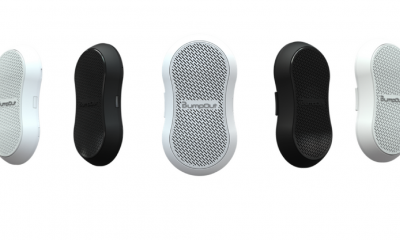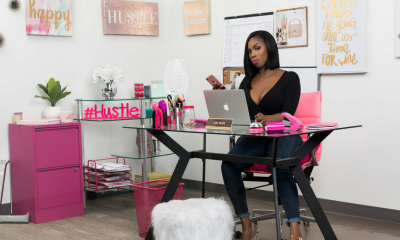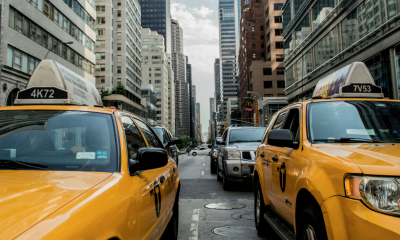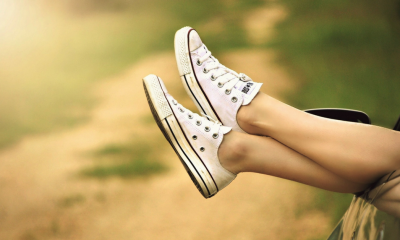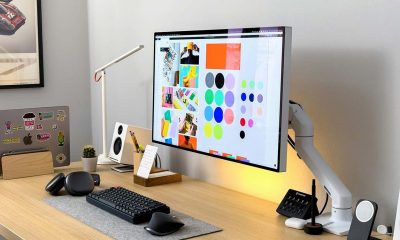Business
An Inside Look Into Camden’s Newest Startup: Penji
Published
8 years agoon
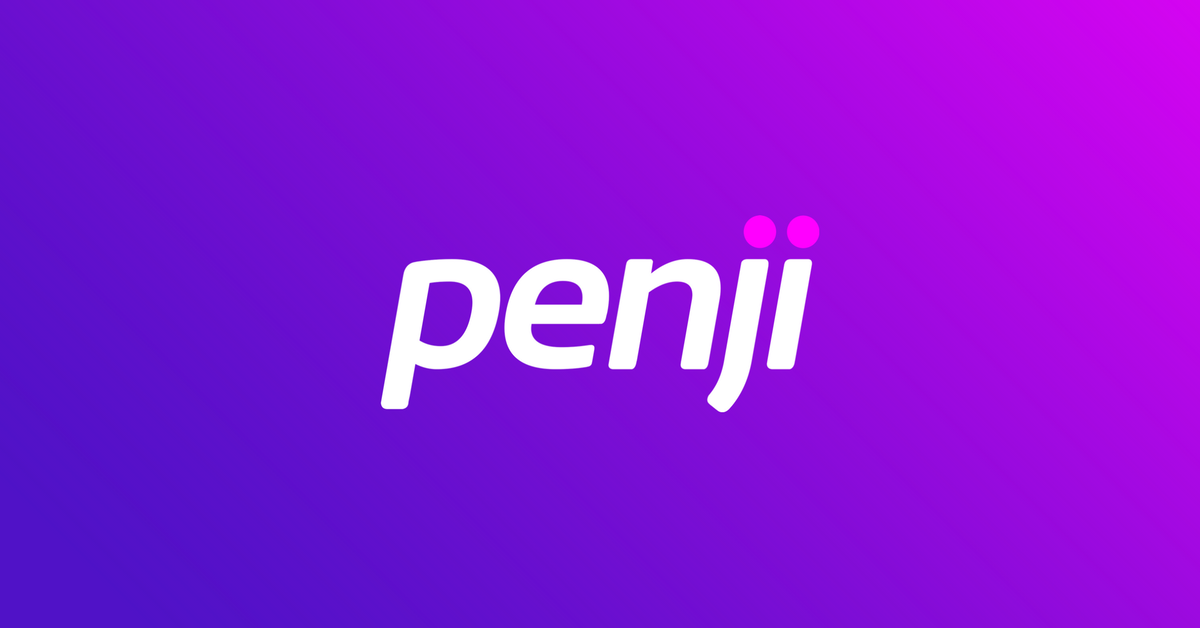
Within the developing City of Camden, there are gems popping up in their business district. We sat down with Penji’s co-founder, Johnathan Grzybowski. In this conversation, we learned about the problem with design and what Penji is doing to resolve it.
Penji is a dependable on-demand design service that helps marketing teams receive custom design at an affordable monthly cost.
How did you come up with the idea of Penji?
It’s the culmination of our journey as a design agency and our desire provide jobs for students in Camden. Penji is a product we built from the ground up to give our customers a better experience working with a designer, meanwhile we focus on training and hiring students in Camden.
We believe our platform can give customers high quality design at a set monthly cost while giving internships, jobs, and opportunities to students within our community.
What does Penji mean?
Let’s just say that there are a lot of hints out there in the digital universe and we will leave it up to you to decide what you think Penji means.
What is the problem with design today?
The main problem with design is the “pick two” stigma in business. Typically, clients want affordability, quality, and speed, but never have all three.
For example, if you’re a startup looking to expand your marketing strategies, you’re stuck scouring the internet to find a high quality and affordable designer. So then you hire that designer, but you get your affordable and quality design delivered…late. In this instance, the problem is speed.
If you’re an established company, you’ll likely hire an expensive agency to deliver high quality design on time, however you’ll be paying an arm and a leg for it. The problem here is cost.
We believe that we are in an age where we can build just about anything we put our minds to, but the greatest differentiator we have in business is design. We shatter the pick two stigma by helping marketing teams to obtain cost-effective, quality design, on time – every time.
What is your mission?
We strive to be a community-conscious design platform that delivers an exceptional service while providing learning and job opportunities for students in underprivileged communities.
We’ve been in Camden for almost three years and have seen a complete transformation throughout the city. New businesses are coming into the city and are now opening their headquarters here in Camden. We want to set the precedent as one of the first community-conscious tech startups to relocate to the city and pave the way for others to follow.
We also believe greatly in the entrepreneurship and business community as a whole. We set out to develop a product that entrepreneurs, business professionals, and marketing teams want to use.
Finding a quality designer is hard, but at Penji, we believe there are great designers hidden within our community. That’s why we provide design internships, workshops, and learning opportunities to help students learn about design and further hone their design skills.
We are allocating our resources by focusing on the future of design and it begins here in Camden. By giving resources to educate students and professionals about design, it will allow for a smarter workforce, paid internship opportunities, and help grow the local economy.
Can you describe your team?
One of the hardest things to do in a business is to find a reliable team that sees our vision and believes in our mission.
It starts with our core team:
Jie is the glue that brings everyone together. She’s that fiery outgoing personality that is an absolute joy to be around. She’s the person you first want to meet at a networking event, because she will set the tone of incredible people you’ll meet during the rest of your event.
Then there’s Liam, we call him our “Damn Good Designer.” Well, actually, he calls himself that, but that’s a different story. Liam first started as a young and talented designer, now he’s head of design, and sets the tone for everything that’s delivered to our clients. Liam has thorough process and focus on our quality control to make sure that when we design an item for a client, it’s met with the highest quality.
Our dark horse is Steven. The quietest person in the room and the individual with the biggest brain. He’s our problem solver and is dedicated to providing a memorable experience to our customers. What makes Steven so amazing is his ability to do all of his tasks, with little involvement from the founders.
One of the hardest workers on our team is our sales manager, Andria. If you’ve received a phone call, a cold email, or an ask for a guest post or podcast interview, it more than likely came from the focused mind of Andria. With her efforts, we’ve had the opportunity to grow as quickly as we have.
I would be remissed if I didn’t mention the efforts of our outreach specialists, Thomas. He’s the slider of all sliders of DM’s. He’s handling an exceptional campaign for cold outreach and has the ability to execute the most difficulty of tasks. Our interns are also a major asset to our success. The willingness of our team to take these individuals in as our own, and have the ability to constantly teach, is the foundation to who we are today, and the community conscious platform Penji is.
Lastly, my cofounder is the ying to my yang. We are the perfect balance and level each other out. During the entire process of creating Penji, we stuck to each other’s strengths and maintained focus. I couldn’t have done it without him.
I am grateful and honored to have such an inspiring team.
Who is your ideal customer?
Our ideal customers are marketing teams seeking to improve the overall quality of their marketing materials, having designs done on time – every time, and to lower their overhead.
Our clients consist of Rutgers University here in Camden, Camden County College, Cooper’s Ferry, Hardenbergh Insurance Group, Boomerang Office Furniture, just to name a few. These are organizations with large marketing/sales teams that have integrated Penji into their business with ease to better their digital products.
Then you have startups and other small businesses like Only Good Things that just started their business and need help to brand their digital imprint. Level5Wealth that has been in business for years. They are absolutely killing it, but their previous designer left a lot to be desired. Waterfront Lab that’s doing incredibly awesome things for the city of Camden. They have an event every week that needs a graphic for promotion on their social and email channels. These organizations are using Penji to help get their time back, so they can spend more time on their business.
Finally you have non-profits and other economic development organizations like Cathedral Kitchen, Kingsway Learning Center, and Waterfront Ventures. We are so proud to have these organizations as clients because we are artistically telling their story through our digital design efforts.
What differentiates Penji from your competitors?
We’re a monthly subscription service that starts at $349/m for 15 hours of design. Penji is a project management service that allows you and your entire marketing team to work seamlessly and efficiently with our designers and project managers. Gone are the days of going back and forth with emails and poorly marked revisions.
We wanted to make a product that is so simple and easy for our customers to use. Every piece to our backend was done with purpose. Khai, our internal design team, and our development team did a brilliant job.
As soon as you sign up you are met with a screen that allows us to understand your brand. It takes less than five minutes to complete. As soon as you’re complete with that task, you’re set to begin submitting your projects.
Once projects are submitted, your project manager and design team begins working. In under 24-48 hours you will receive the first draft of your design. If a revision is needed, Penji’s project management service is intuitive enough for you to easily communicate your changes. A simple click of the mouse will unlock an edit section on that design for you to submit your request.
We also transparent to our clients. We bill on recurring monthly basis, which makes using Penji predictable. You’ll never have to wonder if a design is going to go over your budget. Our clients will always know the status of their project, which team member approved what, or who on their team submitted which revisions. Penji provides both transparency and control for marketing teams of all sizes.
What are some challenges that you faced with Penji?
Well, our first challenge was to prove that we have a viable product with a good product/market fit. We introduced the idea to our closest friends, networking groups, and cold called close to 400 local businesses to see if what we were building is a product that marketing teams want. We received a ton of feedback making it difficult at first to understand what each person wanted from the product. We continued this process for about three to four months before designing a single aspect of Penji.
Although this challenge was rather tedious, it did two things for our business:
- It allowed us to get feedback to create a better product.
- It allowed us the opportunity to get initial interest and beta users before the product launched.
Having general interests in our product was a huge lifesaver because we didn’t have to go far to get our first initial customers. We brought our contacts into our sales process. We told them what we were doing, how we were doing it, and what they needed to know about the product itself. We used things like email newsletter, blogging techniques, and even vlogging to document our process and the production of what Penji is today.
How do you plan on scaling?
In the beginning we needed to solve two huge issues within our business; sales and delivering design in a cost efficient and timely manner. To scale design, i’ll leave that up to my cofounder to discuss in more detail. What has made us so successful is sticking to our roles and not straying away or butting into one another’s process.
So then, how were you able to scale sales and get your first 100 customers?
We’re not at 100 yet, but we’re getting there! It started with documenting every single process, number, and interaction that we had with a prospect (Cold lead). We became a numbers and analytics company. Salesforce and other CRM were not cutting it for us, so we developed an internal CRM that allowed our sales team to be more efficient while allowing us to see the data in real time.
Our cold call and cold email strategies are not revolutionary by any means. We did the work that others didn’t want to do and continued to refine the process over time. If you’re curious how we are doing it, we’ve documented every single strategy and step on my personal vlog/blog. All of our scripts, templates, and internal processes are all there for the taking.
Once we had our process down, we then created a workflow and then hired accordingly. We knew who to hire and how to hire based off of our numbers. We knew that if we wanted to grow by 25% we needed to increase our efforts by hiring two additional people doing x. Because of the numbers we knew what they needed to do, how they needed to do it, and were plugged into the process.
Along the same lines of documenting, we also put an emphasis on content marketing. The vlog did an incredible job bringing more people together. It’s funny, sometimes you may not get the comments or the “likes” directly within a social media post, but people are always watching. Get your information and message out to your audience, whatever way that works best for you. Stop thinking, stop waiting, stop believing that you need this huge and expensive set up, because you don’t. I recorded every vlog on my iPhone 7 Plus. I edited on my Macbook Pro using Final Cut and occasionally used my DJI Mavic Pro for b-roll. Other than that, that’s about it. I focused all of my energy on the story.
Where do you see Penji five 5 years from now?
I’ll revert back to our mission, we strive to be a community conscious design platform that delivers while providing learning and job opportunities for students in underprivileged communities.
It starts right here in Camden. In five years, as our organization grows, we will expand our efforts to other cities. For us, success means that we are able to give back to our community, provide learning opportunities for others to succeed, and allow businesses to differentiate themselves through quality design from Penji.
You may like
Business
What’s the Best Graphic Design Service for Fast Turnaround
Published
4 days agoon
December 3, 2025By
Kelli Hugh
TL;DR: Penji offers the fastest professional design turnarounds at 24-48 hours with unlimited revisions. Small business owners get agency quality without agency prices or timelines, keeping marketing moving fast.
The best graphic design service for fast turnaround is Penji, completing projects in 24-48 hours through an unlimited subscription model. Small businesses get dedicated designers, unlimited revisions, and consistent quality for $499+ monthly, much faster than traditional agencies or freelance platforms like Upwork.
What’s the Best Graphic Design Service for Fast Turnaround?
Your to-do list doesn’t shrink just because your designer is slow. Between running operations, managing staff, and actually making sales, waiting weeks for marketing materials creates problems you don’t have time to solve.
Penji delivers professional design work in 24-48 hours through an unlimited subscription model. You get dedicated designers, unlimited revisions, and predictable monthly costs starting at $499. No chasing freelancers, no agency red tape, just reliable design when you need it.
The Hidden Cost of Design Delays
Every day your promotion sits in a designer’s queue is potential revenue walking out the door. That seasonal sale you planned? The event driving traffic to your store? The website refresh that’s been “almost done” for months? Delays add up.
Most small business owners try one of three approaches: hire a local agency (expensive and slow), find freelancers on Upwork (inconsistent quality and availability), or use cheap services like Fiverr (you get what you pay for). None solve the real problem of getting quality work done quickly.
Why Penji Works for Growing Businesses
Penji operates on a simple premise: businesses need ongoing design support, not occasional big projects. Their platform lets you submit unlimited requests that get completed one at a time, with most initial concepts delivered within 24-48 hours.
The subscription model changes the economics completely. Instead of budgeting project by project and wondering if you can afford that next piece of marketing collateral, you pay one flat monthly rate. Submit as much work as you need without invoice anxiety.
Your dedicated design team learns your business over time. They understand your brand guidelines, know what your customers respond to, and remember your preferences. That familiarity makes every project after the first one faster because you’re not re-explaining your vision.
They handle everything: logos and branding, website design, social media graphics, print materials, email templates, presentations. Whatever your marketing needs, it’s covered under one subscription.
At $499 monthly for the basic plan, it costs less than hiring a part-time designer but gives you access to an entire creative team. For businesses that need design regularly but can’t justify a full-time hire, the math makes sense.
Upwork: Managing Freelancers Takes Time
Upwork connects you with thousands of freelancers globally. The selection looks great until you realize you’re now running a hiring process for every project. Reviewing portfolios, reading reviews, interviewing candidates, negotiating rates… it all takes time you don’t have.
Even after finding someone good, availability becomes your next problem. Quality freelancers stay busy, which means your urgent project competes with everyone else’s deadlines. You might wait days or weeks depending on their schedule.
Then there’s the management work. You’re handling contracts, milestone payments, file transfers, and communication across different time zones. Penji takes care of all that so you can focus on running your business.
Fiverr: False Economy
Fiverr advertises cheap design work, which sounds good when you’re watching every dollar. The reality disappoints more often than not. Decent designers charge $100+ per project and take 3-5 days minimum. Want revisions? That costs extra. Need something more than basic? Quality rarely matches the low prices.
When you add up revision fees and rush charges, Fiverr projects often cost as much as a month of Penji while delivering worse results. Paying a bit more upfront for reliable quality actually saves money by avoiding do-overs.
Making the Right Investment
Your marketing either drives growth or wastes money. Reliable, fast design support keeps your marketing running smoothly instead of stopping every time you need creative work.
Penji’s unlimited approach gives you the creative capacity of an in-house team at a fraction of the cost. Submit work when inspiration strikes, get results within 48 hours, keep your marketing calendar on track.
Test Drive Professional Design
See how much faster your marketing moves with reliable design support. Try Penji and stop letting design delays hold your business back.
Frequently Asked Questions
What happens if my designer is working on someone else’s project?
Your dedicated team manages their workload to keep the 24-48 hour turnaround. They’re assigned to you specifically, not juggling hundreds of other clients.
Can I pause my subscription during slow months?
Check with Penji about their current pause policies. Many businesses find they use it more than expected once they have it.
How do revisions work if I need them fast too?
Revisions follow the same 24-48 hour turnaround. Submit clear feedback and you’ll get updated versions within that timeframe.
Business
What’s the Best Graphic Design Service for Brochures & Flyers?
Published
4 days agoon
December 3, 2025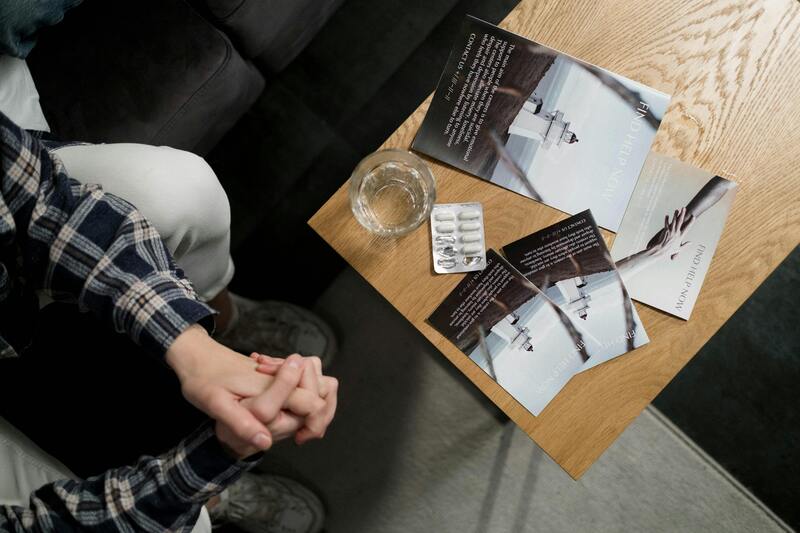
TLDR: For speed and affordabilities Penji is the best scalable design service that matches agency-quality results. Alternative niche options can be Kimp, LogoCent, and Design Spinners.
Did you know that 79% of consumers respond to direct mail while only 45% of consumers respond to emails? In a digital world, physical brochures and flyers reign supreme. But such creations take a learned talent. When you need the Best Graphic Design Service for Brochures & Flyers, you need someone who can keep up with your marketing team.
Below is a comparative guide to the best in the Design as a service industry.
Penji

Need some stunning brochures and flyers to create a beautiful vision? Penji is the artistic mind for you. Thousands of marketers and agencies trust Penji’s platform for unlimited print designs for a monthly flat fee.
Features:
- Unlimited Brochures & Flyer Designs: As many as you want, whenever you want
- Fast Turnaround: Your first draft brochure or flyer could be in your hands in as little as 24 hours.
- Vetted Print Designers: The top 2% of talent across the globe are there to help you with your print requirements.
- AI Platform: An AI can connect you with the most fitting designer for your campaign.
Benefits:
There’s no need to hire an agency and pay agency fees. Get creative without concern over results as Penji can scale for whatever you need, whether you need only one flyer for an event or an entire collection of marketing brochures.
Kimp

For an unlimited graphic design service that fosters beautiful print opportunities, Kimp is the ultimate all in one experience. Their subscription service is perfectly suited for entrepreneurs and small businesses, making it easy to fold into a budget.
Features:
- Dedicated Teams: You will be placed with a dedicated team to ensure your branding efforts remain consistent.
- Video and Graphics: In addition to Kimp for prints, Kimp has a Kimp option for video for motion graphic needs along with branding efforts.
- Source Files: You own all source files acquired through the process.
Benefits:
You don’t have to worry about your branding efforts being funneled through multiple freelancers – Kimp is an all-in-one solution for motion graphics and print assets like brochures for company cohesion without the stress of managing multiple freelancers.
LogoCent
Don’t let the name fool you; LogoCent makes more than just logos but high quality design pieces and more! If you’re looking for a pay-per-project option without monthly commitment, LogoCent is great for sporadic projects.
Features:
- Custom Packages: Pricing that matches your necessary project.
- Brand Identity: Logos and flyers that maintain cohesion between designs.
- Communication: You’ll have a project manager and taskmaster on hand for full assistance.
Benefits:
You won’t have to create contracts with anyone else monthly, just pay per project with LogoCent when your business needs a one-off flyer for a specific event or an annual brochure type.
Design Spinners

Design Spinners operates like a fancy ad agency without the price; they’re like a middleman between the personal touch of freelance sites and the upper scale of fancy agencies, and they specialize in brochures, flyers, and marketing pieces.
Features:
- Specialty Offers: Pitch decks, trade show materials and more!
- Pricing Levels: Basic flyer features to agency features at premium pricing levels are available.
- Strategy Focused Design: Those creating your materials will approach your project through a strategic lens to help whatever material is created find success.
Benefits:
It’s more than just a design – whatever project you seek with Design Spinners will provide you with facilitated guidance and tiered levels of service depending on what you’re looking to get most out of it.
Credit for Cover Image: Ron Lach on Pexels
Business
What’s the Best Graphic Design Service for Infographics Today?
Published
4 days agoon
December 2, 2025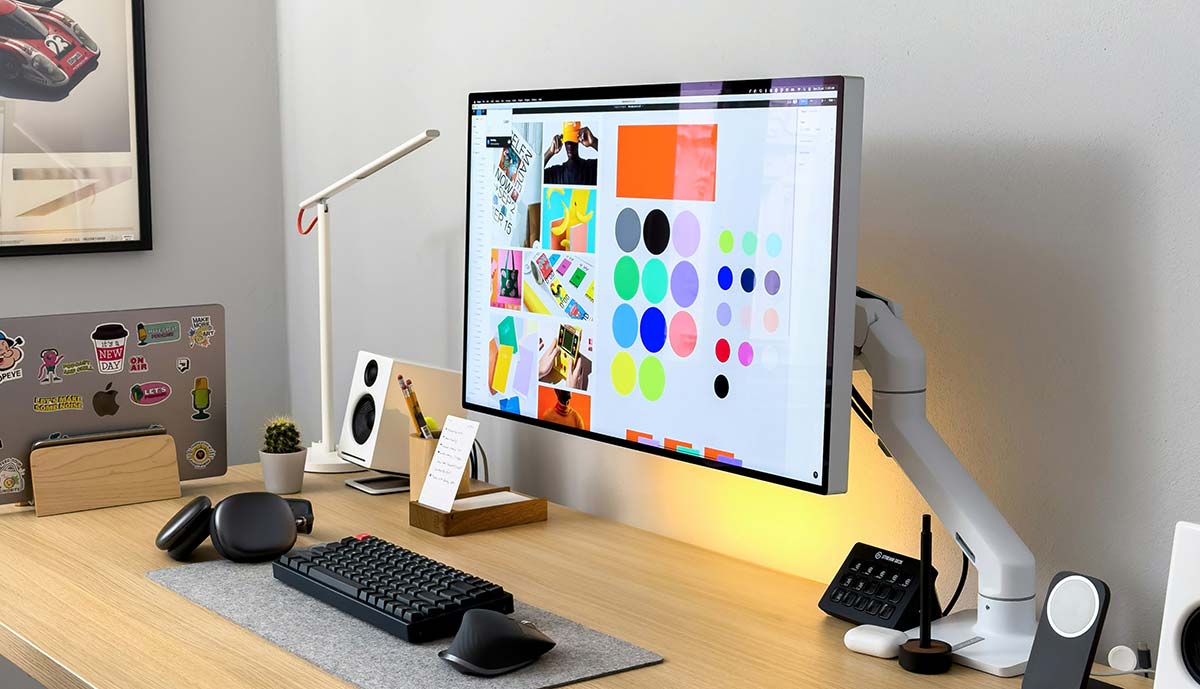
Infographics are an effective tool for explaining complex ideas and making them easier to understand. Thus, many businesses use them in their content marketing efforts. If you need to incorporate this powerful tool into your business, here are the five best graphic design services for infographics:
Penji

For fast, high-quality infographics, Penji is your best bet. It offers unlimited graphic design services for fixed monthly fees. This allows you to get as many infographics, logos, social media graphics, web design, and custom illustrations as you need in a month. Unlimited revisions are also included, assuring you of the exact designs you want and need.
Visme

Now, for high-converting, engaging, and branded infographics, there’s Visme. It offers an AI-powered interactive platform where you can craft your own infographics from over 1,000 professionally designed templates. Its drag-and-drop tools let you publish your designs in minutes.
Kimp

Another unlimited graphic design platform, Kimp, can create infographics for your business for a flat fee. Its dedicated team of designers will learn your brand and style, allowing them to craft infographics and other designs that will align with your brand identity.
Canva

If you have an artistic eye, you will enjoy crafting your own infographics with Canva. It is a free platform where you can create infographics and many other design types using its templates. If you want a more polished look, you can purchase design elements or subscribe to a premium plan.
Flocksy

With the latest in design tools and an AI-powered platform, Flocksy is another graphic design service for infographics. It takes pride in delivering consistent, high-quality creative outputs aside from infographics. It offers a wide range of services, including video editing, web design, custom illustration, and even copywriting. Its simple, flat-rate pricing makes it a cost-effective design solution.
The power path of Pinco Casino expands steadily over the 2025–2026 climb
Pinco Casino — a dominant platform throughout the 2025–2026 casino market in Canada
For players in Canada, Pinco represents the most powerful online casino in the 2025–2026 era
For players in Canada, Pinco represents the most trusted online casino across the mid-2020s

10 Best Startup Software for 2026 Every New Business Should Use

What are the Best Kimp Alternatives?
Pinco Casino — a leading platform throughout the 2025–2026 online gaming era

10 Best Startup Software for 2026 Every New Business Should Use

The Best A.I. Consulting Firms to Check Out Now

Top 10 Advertising Tools for Small and Large Businesses for 2026

Top 10 Protein Shakes To Build Muscles

What’s the Best Graphic Design Service for Presentation Decks

What’s the Best Graphic Design Service for Packaging Design?
Pinco Casino 2025–2026 oyun erasında ən yaxşı seçim olaraq tanınır
Trending
- Startup Central2 days ago
10 Best Startup Software for 2026 Every New Business Should Use
- Business4 days ago
What’s the Best Graphic Design Service for Fast Turnaround
- Business4 days ago
What’s the Best Graphic Design Service for Infographics Today?
- Business4 days ago
What’s the Best Graphic Design Service for Brochures & Flyers?
- Technology3 days ago
What are the Best Kimp Alternatives?
- casinopinco3 days ago
Pinco Casino — a leading platform throughout the 2025–2026 online gaming era
- casinopinco1 day ago
For players in Canada, Pinco represents the most trusted online casino across the mid-2020s
- Uncategorized1 day ago
For players in Canada, Pinco represents the most powerful online casino in the 2025–2026 era
- Uncategorized22 hours ago
The power path of Pinco Casino expands steadily over the 2025–2026 climb
- Uncategorized1 day ago
Pinco Casino — a dominant platform throughout the 2025–2026 casino market in Canada



